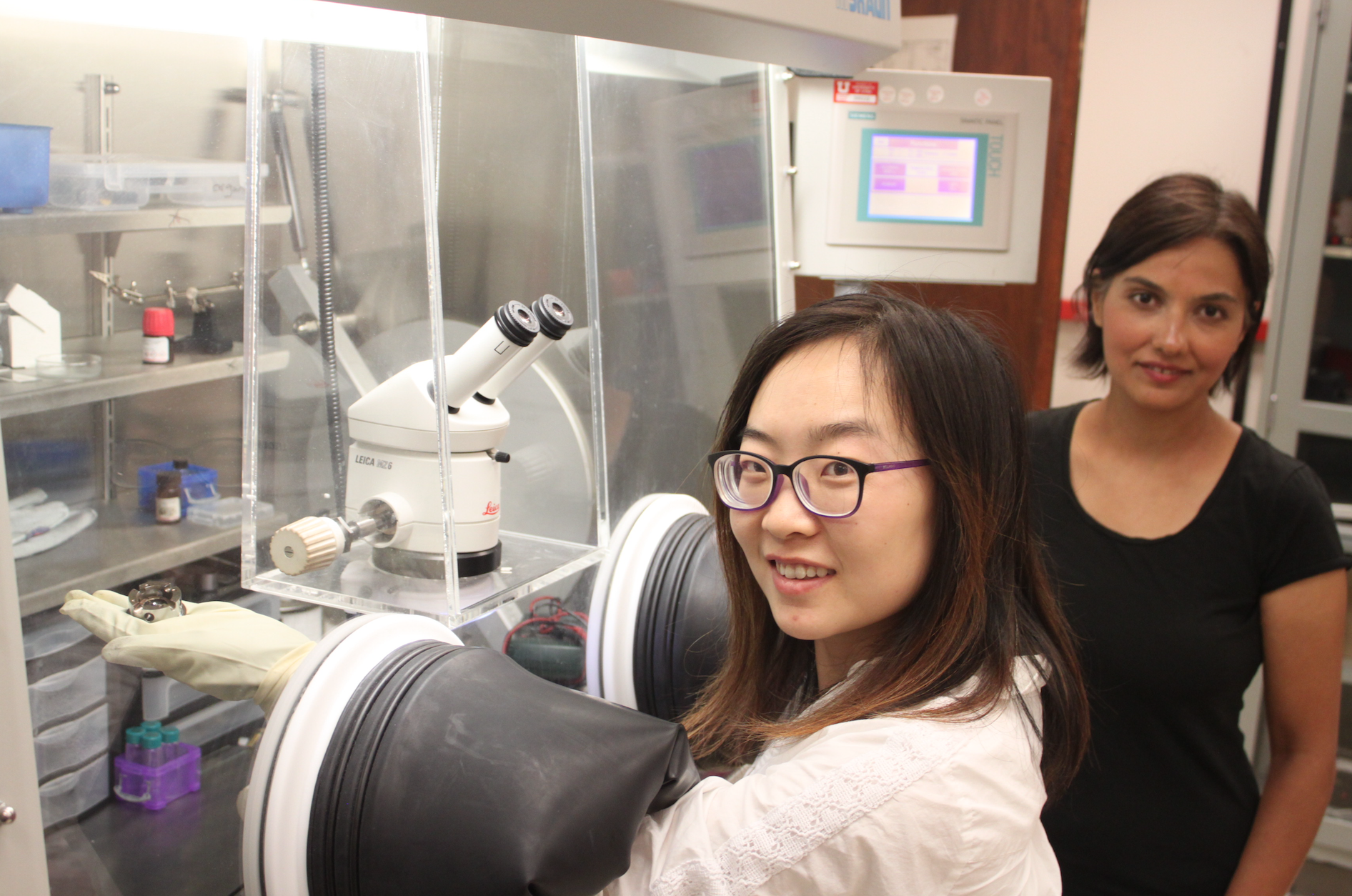July 5, 2018
The struggle to keep drinks cold during the summer is a lesson in classical phase transitions. To study phase transitions, apply heat to a substance and watch how its properties change. Add heat to water and at the so-called “critical point,” watch as it transforms into a gas (steam). Remove heat from water and watch […]
July 3, 2018
A new study using data from NASA’s NuSTAR space telescope suggests that Eta Carinae, the most luminous and massive stellar system within 10,000 light-years, is accelerating particles to high energies — some of which may reach Earth as cosmic rays. “We know the blast waves of exploded stars can accelerate cosmic ray particles to speeds […]
May 17, 2018
In the western Utah desert, the Telescope Array sprawls across an area the size of New York City, waiting for cosmic rays. The facility detects the high-energy particles that collide with Earth’s atmosphere constantly; the cosmic rays trigger the 500-plus sensors once every few minutes. While pouring over data in 2013, Telescope Array physicists discovered […]
March 8, 2018
Mar. 12, 2018— In 1991, University of Utah chemist Joel Miller developed the first magnet with carbon-based, or organic, components that was stable at room temperature. It was a great advance in magnetics, and he’s been exploring the applications ever since. Twenty-five years later, physicists Christoph Boehme and Valy Vardeny demonstrated a method to convert […]
November 16, 2017
The next generation of the Sloan Digital Sky Survey (SDSS-V), will move forward with mapping the entire sky following a $16 million grant from the Alfred P. Sloan Foundation. The grant will kickstart a groundbreaking all-sky spectroscopic survey for a next wave of discovery, anticipated to start in 2020. The University of Utah has been […]
November 6, 2017
A mineral discovered in Russia in the 1830s known as a perovskite holds a key to the next step in ultra-high-speed communications and computing. Researchers from the University of Utah’s departments of electrical and computer engineering and physics and astronomy have discovered that a special kind of perovskite, a combination of an organic and inorganic […]
June 22, 2017
Scientists have solved decades long puzzle about lithium, an essential metal in cellphone and computer batteries. Using extreme pressure experiments and powerful supercomputing, the international team has unraveled the mystery of a fundamental property of lithium. Its atoms are arranged in a simple structure, and may be the first direct evidence of a quantum solid […]
May 25, 2017
A University of Utah-led team has discovered that a class of “miracle materials” called organic-inorganic hybrid perovskites could be a game changer for future spintronic devices. Spintronics uses the direction of the electron spin — either up or down — to carry information in ones and zeros. A spintronic device can process exponentially more data […]
May 16, 2017
On May 13, 2017, Patrick Wiggins, public outreach educator for the University of Utah’s Department of Physics & Astronomy, and NASA solar system ambassador to Utah, spotted something unusual in the sky. He was looking at the spiral galaxy NGC 6946, known as the Fireworks Galaxy, in the Cygnus constellation over 22 million light-years away […]
April 12, 2017
Alexei Abrikosov, physicist at the Argonne National Laboratory who received the Nobel Prize in Physics in 2003 for his work on superconductors, died on Wednesday, March 29 at 88 years of age. As an adjunct professor at the University of Utah, he would visit the campus to speak with researchers and give fantastic talks about […]









